- Administrator
- Albums and Singles
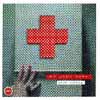 Much like Manual, this EP release follows suit from a notable full-length release also on Morr Music last year. However, the chances taken here almost (but don't quite) work for me. The production is fantastic—the inclusion of cello, other voices, sound effects, and non-traditional instruments is a warm variety to the ingredients. It compliments the music nicely but somehow the songs just don't sound that strong.
Much like Manual, this EP release follows suit from a notable full-length release also on Morr Music last year. However, the chances taken here almost (but don't quite) work for me. The production is fantastic—the inclusion of cello, other voices, sound effects, and non-traditional instruments is a warm variety to the ingredients. It compliments the music nicely but somehow the songs just don't sound that strong.
The lead song, "No. One" is an upbeat maximalistic rocker which is decent but not nearly as catchy as some of the highlights of Ms. John Soda's debut album (the counting vocals and frequent stops aren't much more than a mild annoyance), while the second track, "Sometimes Stop, Sometimes Go" has some beautiful moments. Each, however, are sort of ruined by Stephanie's frequent talking. She's got such an alluring singing voice that I wish she would only sing these tracks rather than hide behind spoken word interludes. The third cut, "I & #8217" begins as a mishmash of sounds and samples from the No P or D album, but as it's re-pasted back together, vocals and additional instruments are added by Subtle (which features unnamed Anticon members - although Dose One's voice is clearly audible). It's an interesting concept but at four minutes doesn't sound like it's beed explored to the full extent. The disc continues with the creepy late-night car wreck devastation score in the form of the slow moving "If Someone Would Know," and closes the almost unbearingly heavy dialogue of "I think it could work, Marilyn," where Stephanie is almost playing dolly, talking as the fictitious voices of Elvis and Marilyn in a situation far more interesting to read about than to hear. I honestly hope this is the last they come this close to making a "spoken word" record. The good thing about the EP is that it's been made with the intentions of selling on the upcoming European and North American shows: shows I'm anxiously looking forward to. I remain enthusiastic and firmly believe that this EP, while mildly anticlimactic, isn't going to lose any existing fans at all.
samples:
Read More
- Administrator
- Albums and Singles
 Chris Brokaw is known to many as a founding member of Come, and morerecently as a member of Consonant and the New Year, though he hasplayed drums and guitar wherever needed on a number of releases fromPullman to Evan Dando's latest solo effort. Last year he made his solodebut on Red Cities,showing off for the first time his skills at songwriting with hisalready established abilities on guitar. The limited edition Wandering as Wateris the subtle follow-up, part of the Return to Sender series thatshowcases vibrant artists in their rawest form. For Brokaw that meantrecording fifteen songs in one day, played on guitar and tambourine.Some songs are his, some familiar favorites from his Come days, butthey're all fueled by his very quiet and solid musicianship. It's acalm, soothing record in most places, and Brokaw divides it evenly withinstrumental and vocal tracks. Where he has a capable voice, it is onthe tracks where he doesn't sing that Brokaw has the most success. Hisguitar playing is fluid and energetic.The sounds of a small town life escape from the speakers, of simplertimes when all you needed was a nickel at the country store.Considering the minimal percussion, it's also incredible how full thesesongs sound, and for the most part there isn't a flaw to speak of. Onthe songs with vocals, Brokaw stumbles a bit, where his inflections andnotes can warble or even slightly irritate: "My Confidante," with itsopening of "I threw up on the side of the road/Thirty miles from thePoconos," is almost treacherous in every respect, particularly the howlof the chorus. Thus, it almost makes sense that until now Brokaw hasbeen known solely as a musician, and perhaps that's why he excels atthat so well. Here and there, though, the vocals work, like on Come's"Shoot Me First." It's only when he really tries for that note or overemphasizes that the car veers every so slightly into the shoulder.While I think that with a few more releases under his belt, his singingand songwriting will undoubtedly both improve, on repeat listens of Wandering, however, I'll probably just stick to the instrumentals.
Chris Brokaw is known to many as a founding member of Come, and morerecently as a member of Consonant and the New Year, though he hasplayed drums and guitar wherever needed on a number of releases fromPullman to Evan Dando's latest solo effort. Last year he made his solodebut on Red Cities,showing off for the first time his skills at songwriting with hisalready established abilities on guitar. The limited edition Wandering as Wateris the subtle follow-up, part of the Return to Sender series thatshowcases vibrant artists in their rawest form. For Brokaw that meantrecording fifteen songs in one day, played on guitar and tambourine.Some songs are his, some familiar favorites from his Come days, butthey're all fueled by his very quiet and solid musicianship. It's acalm, soothing record in most places, and Brokaw divides it evenly withinstrumental and vocal tracks. Where he has a capable voice, it is onthe tracks where he doesn't sing that Brokaw has the most success. Hisguitar playing is fluid and energetic.The sounds of a small town life escape from the speakers, of simplertimes when all you needed was a nickel at the country store.Considering the minimal percussion, it's also incredible how full thesesongs sound, and for the most part there isn't a flaw to speak of. Onthe songs with vocals, Brokaw stumbles a bit, where his inflections andnotes can warble or even slightly irritate: "My Confidante," with itsopening of "I threw up on the side of the road/Thirty miles from thePoconos," is almost treacherous in every respect, particularly the howlof the chorus. Thus, it almost makes sense that until now Brokaw hasbeen known solely as a musician, and perhaps that's why he excels atthat so well. Here and there, though, the vocals work, like on Come's"Shoot Me First." It's only when he really tries for that note or overemphasizes that the car veers every so slightly into the shoulder.While I think that with a few more releases under his belt, his singingand songwriting will undoubtedly both improve, on repeat listens of Wandering, however, I'll probably just stick to the instrumentals. samples:
Read More
- Administrator
- Albums and Singles
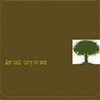 It's always funny to hear how environments affect certain albums, fromthe way the musicians felt to the actual physical environs of thespace. One recent winter, Dan Matz was in an upstate New York farmhouseafter a horrendous snow storm. There was no power, and all he had wasan acoustic guitar and dulcimer, and a friend who played piano to seeit out. So, they wrote and played some songs to pass the time. When thepower finally returned, it was time to record these songs that had keptthem company for the past few days. Carry Me Overis the result, and it sounds just like what I'd expect given thecircumstances under which is was composed. There is a stark beauty tothe arrangements, with very few instruments and virtually nopercussion. A chill passes through these songs, mostly due to thehaunting male-female vocals and the minor key progressions, but thereis also a closeness, as though people are trying to keep warm. Matz andAnna Neighbor play and sing with a staid and complacent nature, asthough this delicate music will break them if they let it out too much.They sing songs as poetry and prose, as declarations and pleas, urgingand convincing at the same time they are weak and afraid. Matz has avery calm and smooth though untrained voice, which means most notescome out solid with minor cracks, a fitting addition to the music thathas the same qualities. "Downpour" is a perfect pop song, withmulti-tracked vocals and keyboards to accompany the deliberate guitarstrums and drums. The title track and "Matthew" also approach thisbeauty, with an all-encompassing sanguinity and human frailty. Othertracks feature eerie choirs, reverb, and bare vocals that inject justenough variety to please even the most stubborn with at least one song.As a whole it is at once a dark, pretty, warm, and barren release, andthere are great songs within that show Matz isn't through crafting hisbrand of off-kilter pop.
It's always funny to hear how environments affect certain albums, fromthe way the musicians felt to the actual physical environs of thespace. One recent winter, Dan Matz was in an upstate New York farmhouseafter a horrendous snow storm. There was no power, and all he had wasan acoustic guitar and dulcimer, and a friend who played piano to seeit out. So, they wrote and played some songs to pass the time. When thepower finally returned, it was time to record these songs that had keptthem company for the past few days. Carry Me Overis the result, and it sounds just like what I'd expect given thecircumstances under which is was composed. There is a stark beauty tothe arrangements, with very few instruments and virtually nopercussion. A chill passes through these songs, mostly due to thehaunting male-female vocals and the minor key progressions, but thereis also a closeness, as though people are trying to keep warm. Matz andAnna Neighbor play and sing with a staid and complacent nature, asthough this delicate music will break them if they let it out too much.They sing songs as poetry and prose, as declarations and pleas, urgingand convincing at the same time they are weak and afraid. Matz has avery calm and smooth though untrained voice, which means most notescome out solid with minor cracks, a fitting addition to the music thathas the same qualities. "Downpour" is a perfect pop song, withmulti-tracked vocals and keyboards to accompany the deliberate guitarstrums and drums. The title track and "Matthew" also approach thisbeauty, with an all-encompassing sanguinity and human frailty. Othertracks feature eerie choirs, reverb, and bare vocals that inject justenough variety to please even the most stubborn with at least one song.As a whole it is at once a dark, pretty, warm, and barren release, andthere are great songs within that show Matz isn't through crafting hisbrand of off-kilter pop. samples:
Read More
- Administrator
- Albums and Singles
 Every once in a while, an artist comes along who sounds born into a sound, like while in the womb his parents played him classic records that he just absorbed into his psyche. Andy Wagner has that quality, like there's nothing else in this world he could be doing because it just wouldn't fit. This multi-instrumentalist uses guitar, keyboard, bass, and accordion to construct pop songs that defy the typical trappings to derive at something more.Tense Forms
Every once in a while, an artist comes along who sounds born into a sound, like while in the womb his parents played him classic records that he just absorbed into his psyche. Andy Wagner has that quality, like there's nothing else in this world he could be doing because it just wouldn't fit. This multi-instrumentalist uses guitar, keyboard, bass, and accordion to construct pop songs that defy the typical trappings to derive at something more.Tense Forms
His breathy, Dylan-esque voice talks of death, human relationships, beginnings and ends, and all over a bed of western influences and tossed with rockabilly and country rock. The result belies the DIY formula he adheres to, as Horse Year has the feel of a solid group of players that have been polishing their skills in bars for five years, playing for crowds wading in sawdust and peanut shells. For the most part, though, Wagner wore all the hats himself, including the engineering and production work, with a scant few guests. While they add some much needed flavor, including the stable drumming of Mark Benson, this is Wagner's show, and rightfully so. Narrative and introspective, he has the presence of a soul who will be writing and recording for a long time. "Weak in the Knees" and "Something's Watching" speak of the inevitable day many of us spend most of our lives trying to pretend will never come, with the latter infusing just enough scare tactics. The ambling waltz and saloon piano of "Nothing to Defend" and "When I Leave" with its shuffle and faded accordion are definite highlights, but this album belongs to "What You Used to Be," all echoed guitar and steady rhythm over laments of the past. Wagner is also a member of the Delta Still, and also works in Chicago area theatre, but this well-crafted debut shows he has the ability to overshadow it all like the dark side of the moon with his own work.
samples:
Read More
- Administrator
- Albums and Singles
 Earlier this year Autechre curated the fifth All Tomorrow's Parties festival, and of that bounty comes this, actually the fourth ATP compilation. All Tomorrow's Parties comps have never been more than glorified mixtapes ("ultimate" mixtapes according to Thurston Moore), thoughtfully scratching the surface of one of the best large-scale concert series; Autechre's volume, though, is the first with potential to transcend its posterity-building, afterthought status, becoming an (almost) essential collection.
Earlier this year Autechre curated the fifth All Tomorrow's Parties festival, and of that bounty comes this, actually the fourth ATP compilation. All Tomorrow's Parties comps have never been more than glorified mixtapes ("ultimate" mixtapes according to Thurston Moore), thoughtfully scratching the surface of one of the best large-scale concert series; Autechre's volume, though, is the first with potential to transcend its posterity-building, afterthought status, becoming an (almost) essential collection.
This is the first double-disc (or album) of the ATP comps, making the odds of finding something compelling even greater. This is also the first ATP comp to focus almost entirely, and understandably so, on the electronic realm, giving it, though twice as long, a common thread that was lacking on the first two, curated by Sonic Youth and Shellac. An increased cohesiveness is particularly achieved in the sequencing of the tracks across the two discs. Disc one is undoubtedly more of a "daytime" collection. It begins with two hip-hop songs, the first new material from Public Enemy and the second a stellar remix of the Masters of Illusion track "Bay-Bronx Bridge," a Bollywood-breakified gem that would be at home in a DJ/rupture mix for sure. Two hip-hop infected instrumental tracks follow, by Autechre's upbeat alter ego Gescom and Miami's Push Button Objects, whose "ATP track" features sitar plucking and operatic vocals floating above a cracklin' beat. These songs are "pop" enough to follow the hip-hop and segue nicely into a laptop piece from Jim O'Rourke sounding like the more pleasant bits of recent Fenn O'Berg stuff. This is music for relaxing in the backyard after an afternoon of driving around with the beginning of this disc in the ghetto blaster. Two Autechrian, yet nonabrasive tracks from O.S.T. and Made begin the evening's journey into night. Somewhat uneventful, these leave room for the third and final hip-hop track, this time from Kool Keith's ! Dr. Dooom, whose "Leave Me Alone" is a hilarious tirade against the music industry containing one show- stopping verse that begins, "Why you think I should wear a motorcycle helmet—why don't you wear it?" Detroit techno guru Steve Pickton's Stasis project closes disc one with a wonderful piece blending spacious drones into rumbling electro and beginning a trip to the dancefloor that will be continued on the second disc.
More of a "nighttime" disc, with most of its tracks primed for the dark spaces of the dancefloor, disc two kicks off with one of its nicest surprises, faceless technoid Anthony 'Shake' Shakir's "Ghetto Futures," a track whose slashing breaks sound played by a live army. A fragile, beautiful track from Disjecta (Seefeel's Mark Clifford) allows a brief moment of peace before the beefy, though unremarkable techno throbbings of Baby Ford and Mark Broom. A lengthy and exceptionally soothing Pita track begins the final and most abstract segment of the comp. Surprises herein include an Autechre track that, despite its title ("/]-/](II)"), is relatively accessible, even danceable, and a sprawling new track from Sub Pop sludge/drone stoners Earth. The typically harsh stylings of Bola (one of four Skam artists on this comp) and Hecker round off the disc in predictable, though enjoyable fashion. If ATP comps of the future provide the same variety, tempered by the same degree of cohesion and consistency evident here, these collections may become as valuable as tickets to the events themselves.
samples:
- Masters of Illusion - The Bay-Bronx Bridge [Bhongra Remix]
- Stasis - Artifax
- Anthony 'Shake' Shakir - Ghetto Futures (Go Figure)
Read More
- Administrator
- Albums and Singles
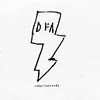 The production team of James Murphy and Tim Goldsworthy has been theobject of some of the most exalted praise that the music press iscapable of bestowing. Their productions and remixes as The DFA and thestring of releases on the DFA label have been so hyped and oversoldthat it's rather hard to wade through all of the hyperbole and justenjoy the music, which is unfortunate, because more often than not itis extraordinary. Building their reputation on a series of incredible12" releases by the new wave of post-punk and mutant disco-influencedgroups such as The Rapture, The Juan Maclean and LCD Soundsystem, theyhave also branched out into decidedly more experimental territories,releasing a full-length LP and a 12" single by the psychedelicnoise-metal improvisers Black Dice. Tracking down their sought-afterreleases has been a little difficult since the explosion of pressattention, so the idea of a CD collecting their 12" output is anappealing proposition. Unfortunately, DFA's Compilation #1seriously jumps the shark, as it is far from a complete collection,with glaring omissions and some annoying inclusions. For a relativelyyoung label that has released only seven singles, you'd think that theywould be able to include all seven tracks and even b-sides on thiscollection. However, they omit almost all of the b-sides (except forthe mysterious inclusion of The Rapture's b-side "Silent Morning"), andbizarrely choose to include an incongruous 15-minute noise track fromBlack Dice's Beaches and Canyons LP. Plus, the disc is short atonly about 60 minutes. If they had removed the extraneous Black Dicetrack and used up the rest of the space on the disc, they could haveincluded The Rapture's new "Killing" single, the killer LCD Soundsystemb-side "Beat Connection," the hallucinatory EYE remix of Black Dice's"Endless Happiness," and maybe even the Morgan Geist remix of TheRapture's "House of Jealous Lovers." Instead, we have a disc made up ofmost (not all) of the a-sides, and two rather bizarre songs thatshouldn't be included. I have no complaint with the music, however. TheJuan Maclean's dirty, bottom-heavy electro-disco tracks are infectiousand charming, without being too heavy-handedly retro. LCD Soundsystem's"Losing My Edge," a hilarious minimal electro ode to hipper-than-thouindie cred, sounds as great as ever. The Rapture's "House of JealousLovers" is still one of the best raw, energetic dance-punk songs youcould hope to hear on a crowded dance floor. Black Dice's primitivemetal-scrapings and This Heat-style abrasive madness make "ConeToaster" a terrific avant-rock side. However, the distinguishing musicconsumer is much better off staying away from this woefully incomplete"compilation", and instead trying to track down the original 12"releases, which boast amazing b-sides, remixes and the same level ofaudio fidelity. The DFA's Compilation #1 is, sadly, a missed opportunity.
The production team of James Murphy and Tim Goldsworthy has been theobject of some of the most exalted praise that the music press iscapable of bestowing. Their productions and remixes as The DFA and thestring of releases on the DFA label have been so hyped and oversoldthat it's rather hard to wade through all of the hyperbole and justenjoy the music, which is unfortunate, because more often than not itis extraordinary. Building their reputation on a series of incredible12" releases by the new wave of post-punk and mutant disco-influencedgroups such as The Rapture, The Juan Maclean and LCD Soundsystem, theyhave also branched out into decidedly more experimental territories,releasing a full-length LP and a 12" single by the psychedelicnoise-metal improvisers Black Dice. Tracking down their sought-afterreleases has been a little difficult since the explosion of pressattention, so the idea of a CD collecting their 12" output is anappealing proposition. Unfortunately, DFA's Compilation #1seriously jumps the shark, as it is far from a complete collection,with glaring omissions and some annoying inclusions. For a relativelyyoung label that has released only seven singles, you'd think that theywould be able to include all seven tracks and even b-sides on thiscollection. However, they omit almost all of the b-sides (except forthe mysterious inclusion of The Rapture's b-side "Silent Morning"), andbizarrely choose to include an incongruous 15-minute noise track fromBlack Dice's Beaches and Canyons LP. Plus, the disc is short atonly about 60 minutes. If they had removed the extraneous Black Dicetrack and used up the rest of the space on the disc, they could haveincluded The Rapture's new "Killing" single, the killer LCD Soundsystemb-side "Beat Connection," the hallucinatory EYE remix of Black Dice's"Endless Happiness," and maybe even the Morgan Geist remix of TheRapture's "House of Jealous Lovers." Instead, we have a disc made up ofmost (not all) of the a-sides, and two rather bizarre songs thatshouldn't be included. I have no complaint with the music, however. TheJuan Maclean's dirty, bottom-heavy electro-disco tracks are infectiousand charming, without being too heavy-handedly retro. LCD Soundsystem's"Losing My Edge," a hilarious minimal electro ode to hipper-than-thouindie cred, sounds as great as ever. The Rapture's "House of JealousLovers" is still one of the best raw, energetic dance-punk songs youcould hope to hear on a crowded dance floor. Black Dice's primitivemetal-scrapings and This Heat-style abrasive madness make "ConeToaster" a terrific avant-rock side. However, the distinguishing musicconsumer is much better off staying away from this woefully incomplete"compilation", and instead trying to track down the original 12"releases, which boast amazing b-sides, remixes and the same level ofaudio fidelity. The DFA's Compilation #1 is, sadly, a missed opportunity.samples:
- The Juan Maclean - By The Time I Get to Venus
- LCD Soundsystem - Give It Up
- Black Dice - Endless Happiness
Read More
- Administrator
- Albums and Singles
 Two enigmatic men from the centre of Britain want to take you on amagical mystery tour. Imagine sitting on a train. As it pulls out ofthe grimey station the motion rocks you half asleep, into thatsemi-dream state where shifting realities collide and merge. A chime, adrone and an accelerating heartbeat cross the tracks. The ultimatedestination is bright light, but the journey glitters, as you passrolling hills and emerald forests, out into the wasteland where the sunis blinding and obscures vision. The name Aurelie was chosen for thistrip due to its phonetic beauty, and since beauty is hard to describeorally and lies in the eye, it has to be heard aurally. Make no mistakethis is beautiful music, finding hope in the loss of each passinglandscape. This trip is the perfect one to take out of the crowded citythat inspired labelmate Akatombo. Aurelie are a much more delicate yetequally dreamy proposition, and the final dronesongs on Trace Elements almost lead into the opening chimes of Desde Que Naci.Swim, run by Colin Newman of Wire and Malka Spigel of the recentlyreformed Minimal Compact, now has such a strong roster with anover-riding future music quality aesthetic that it'd be no joke to hailthem as the un-UK's finest record label. Whilst Aurelie are certainlyout there dreaming their own pure visions, there is some room forcomparison with Colin and Malka's mighty Immersion duo, and maybefellow middle Englanders Magnetophone. Aurelie is however more subtlethen either, but it would be a mistake to call this ambient or chillout because Aurelie's warmth and drive are all too human. Once againSwim have given us music beyond genre boundaries, from a time thatwasn't a time.
Two enigmatic men from the centre of Britain want to take you on amagical mystery tour. Imagine sitting on a train. As it pulls out ofthe grimey station the motion rocks you half asleep, into thatsemi-dream state where shifting realities collide and merge. A chime, adrone and an accelerating heartbeat cross the tracks. The ultimatedestination is bright light, but the journey glitters, as you passrolling hills and emerald forests, out into the wasteland where the sunis blinding and obscures vision. The name Aurelie was chosen for thistrip due to its phonetic beauty, and since beauty is hard to describeorally and lies in the eye, it has to be heard aurally. Make no mistakethis is beautiful music, finding hope in the loss of each passinglandscape. This trip is the perfect one to take out of the crowded citythat inspired labelmate Akatombo. Aurelie are a much more delicate yetequally dreamy proposition, and the final dronesongs on Trace Elements almost lead into the opening chimes of Desde Que Naci.Swim, run by Colin Newman of Wire and Malka Spigel of the recentlyreformed Minimal Compact, now has such a strong roster with anover-riding future music quality aesthetic that it'd be no joke to hailthem as the un-UK's finest record label. Whilst Aurelie are certainlyout there dreaming their own pure visions, there is some room forcomparison with Colin and Malka's mighty Immersion duo, and maybefellow middle Englanders Magnetophone. Aurelie is however more subtlethen either, but it would be a mistake to call this ambient or chillout because Aurelie's warmth and drive are all too human. Once againSwim have given us music beyond genre boundaries, from a time thatwasn't a time.samples:
Read More
- Administrator
- Albums and Singles
 Dreams never end. Savage freedom time has begun in avenues all linedwith trees. Times have been strange. Do you hear her enlightenedlaughter? Another reason to cut off an ear? Maybe not. Blixa Bargeldmused upon beauty in the night sky over Berlin, but decided that noarms would ever be able to stretch wide enough to form an adequategesture to capture beauty. Beauty, he decided, remained in theimpossibilities of the body. Rachel's music is a music of such heavenlybeauty they must be tapped into something primal, way deeper than merechord charts and floating tailed black dots on lines. Their logoincludes a crescent moon emblem, recalling a darkness before dawn or asweet scented flower just beginning to bloom. Jason Noble used to playguitar and holler for those monster bird rockers Rodan, who weresacrificed on the alt-rock altar a little too early. Maybe he cut outthe noble heart of the beast and transported it into a rotating chamberensemble in perfect harmony. He was definitely running on the same lineas me at Shellac's All Tomorrow's Parties. Rachel's enchanted and transfixed that weekend, but Systems / Layers is even more gorgeous than that singular performance suggested. Their last album Significant Otherswas a rare bird - the only time I ever saw it was that weekend. They'vetaken some of the minimal play from that and put it into a moreluscious frame, guilded by a theatrical group called SITI. Rachel'spulled an improvising system known as "The Viewpoint" into their orbitand they seem to have caught a glimpse of the music of the spheres.Rachel's discovered a lot, learning new ways of creating andcommunicating. Singer Shannon Wright helped significantly, singing sucha quietly lost yet deeply hopeful song as ever there was. Peel thelayers of an onion and tears run down, but there are no tears as theleaves of a lettuce fall and cover routine systems of dreary urbanlife, and as they rot let roses and chrysanthemums bloom throughcracked concrete. Rachel's transports me to emerald woodland glades ina primitive dream where words are no longer necessary. There is so muchwarmth and compassion in Rachel's music it could burn away all theimpurity in the blackest heart. To describe this music in the way of aregular review would debase it and spoil it's magic. Then the songbecame alive - so glorious!
Dreams never end. Savage freedom time has begun in avenues all linedwith trees. Times have been strange. Do you hear her enlightenedlaughter? Another reason to cut off an ear? Maybe not. Blixa Bargeldmused upon beauty in the night sky over Berlin, but decided that noarms would ever be able to stretch wide enough to form an adequategesture to capture beauty. Beauty, he decided, remained in theimpossibilities of the body. Rachel's music is a music of such heavenlybeauty they must be tapped into something primal, way deeper than merechord charts and floating tailed black dots on lines. Their logoincludes a crescent moon emblem, recalling a darkness before dawn or asweet scented flower just beginning to bloom. Jason Noble used to playguitar and holler for those monster bird rockers Rodan, who weresacrificed on the alt-rock altar a little too early. Maybe he cut outthe noble heart of the beast and transported it into a rotating chamberensemble in perfect harmony. He was definitely running on the same lineas me at Shellac's All Tomorrow's Parties. Rachel's enchanted and transfixed that weekend, but Systems / Layers is even more gorgeous than that singular performance suggested. Their last album Significant Otherswas a rare bird - the only time I ever saw it was that weekend. They'vetaken some of the minimal play from that and put it into a moreluscious frame, guilded by a theatrical group called SITI. Rachel'spulled an improvising system known as "The Viewpoint" into their orbitand they seem to have caught a glimpse of the music of the spheres.Rachel's discovered a lot, learning new ways of creating andcommunicating. Singer Shannon Wright helped significantly, singing sucha quietly lost yet deeply hopeful song as ever there was. Peel thelayers of an onion and tears run down, but there are no tears as theleaves of a lettuce fall and cover routine systems of dreary urbanlife, and as they rot let roses and chrysanthemums bloom throughcracked concrete. Rachel's transports me to emerald woodland glades ina primitive dream where words are no longer necessary. There is so muchwarmth and compassion in Rachel's music it could burn away all theimpurity in the blackest heart. To describe this music in the way of aregular review would debase it and spoil it's magic. Then the songbecame alive - so glorious! samples:
Read More
- Administrator
- Albums and Singles
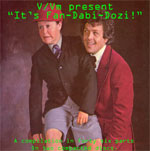 What a mess! Pig entrails and mash-ups? Demented children and piracy?Who's going to clean up this sticky filth? Certainly not me! To attemptto review a compilation of forty six tracks from various artists (whoaren't all V/Vm alter-egos) related to and enjoyed by V/Vm over twocompact discs is an exercise in futility. According to the V/Vmwebsite, contributions have come from all over the world, andconsidering the eclecticism displayed by these selections, I'm notsurprised in the slightest. Setting the tone for this absurd andsometimes entertaining collection is the goofy title track, performedby The Krankies, who are purportedly a "sick Scottish comedy duo".Unfortunately, this awkward children's song is a highlight on thisuneven compilation. Somewhat dull rock music bastardizations and blandnoisescapes are served here in heaping portions by several no-name actsprobably better off being unknown. The only tracks here that get myattention and praise are the pop and rap bootleg mixes. Toecutter's"DMX On Tick" takes the gruff rapper's standard shouts and turns theminto a glitchy freakout. Skkatter thrashes the BT-produced 'NSYNC track"Dirty Pop" with potent DSP fuckery. I would be remiss in my duties asa contributor to this fine publication if I did not mention KevinBlechdom's tribute to our fair-skinned editor-in-chief Jon Whitney."Jon Whitney Houston" is a touching, sentimental tribute to the man wecall Mom, a wonderful cover of "I Will Always Love You" sung word forword. All gushing aside, this really is an iffy release from the V/Vmcamp. After their tributes to love, Aphex Twin, and The Shining, Iexpect more from this shapeless collective of mad hatters and supergoons.
What a mess! Pig entrails and mash-ups? Demented children and piracy?Who's going to clean up this sticky filth? Certainly not me! To attemptto review a compilation of forty six tracks from various artists (whoaren't all V/Vm alter-egos) related to and enjoyed by V/Vm over twocompact discs is an exercise in futility. According to the V/Vmwebsite, contributions have come from all over the world, andconsidering the eclecticism displayed by these selections, I'm notsurprised in the slightest. Setting the tone for this absurd andsometimes entertaining collection is the goofy title track, performedby The Krankies, who are purportedly a "sick Scottish comedy duo".Unfortunately, this awkward children's song is a highlight on thisuneven compilation. Somewhat dull rock music bastardizations and blandnoisescapes are served here in heaping portions by several no-name actsprobably better off being unknown. The only tracks here that get myattention and praise are the pop and rap bootleg mixes. Toecutter's"DMX On Tick" takes the gruff rapper's standard shouts and turns theminto a glitchy freakout. Skkatter thrashes the BT-produced 'NSYNC track"Dirty Pop" with potent DSP fuckery. I would be remiss in my duties asa contributor to this fine publication if I did not mention KevinBlechdom's tribute to our fair-skinned editor-in-chief Jon Whitney."Jon Whitney Houston" is a touching, sentimental tribute to the man wecall Mom, a wonderful cover of "I Will Always Love You" sung word forword. All gushing aside, this really is an iffy release from the V/Vmcamp. After their tributes to love, Aphex Twin, and The Shining, Iexpect more from this shapeless collective of mad hatters and supergoons.samples:
- The Krankies - It's Fan-Dabi Dozi
- Skkatter - Dirty Pop
- Toecutter - DMX On Tick
Read More
- Administrator
- Albums and Singles
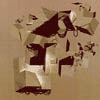 If you haven't heard any of Richard Devine's recorded output up to now, this album is a great place to jump on. Devine has always pushed the envelope of what his tools can do, and with Asect:Dsect we are treated to a version of Devine as mad tinkerer that remains interesting on successive listens the way that some other DSP records do not. Devine's previous outings Lipswitch and Aleamapper visited the extremes of his take on music. The former was a million-mile an hour beat and squiggle fest that was notably absent of a center reference point; a soundtrack for ADD if ever there was one. By contrast, the latter was an exercise in micro-detail exploding out into vast expanses of reverb that demonstrated that there was more to the reigning king of DSP than wonky beats and 128th note programming. With Asect:Dsect, Devine has managed to bring the best elements of those previous records together in a way that is both more accessible and more carefully exploratory at the same time. It's easy to imagine the harsh and often mechanical rhythms that Devine eeks out as simply the music made by machines with Devine at the helm, trying to keep up. But in reality, though his soundscapes and polyrhythms are impossibly inhuman, machines would never make music this confounding. Machines don't take chances, but Devine does and Asect:Dsect is full of imaginative bursts that betray their digital genesis. This is futurism in one of the only ways that it can still be realized in a post-modern world. It's data-rich, full of leaping off points and connecting nodes that take one idea leap over two or three more, and return the listener to the start with a new sense of the territory waiting to be explored. Anyone who has ever clicked through link after link on the web and wound up on a site so arcane that it seems as though it must exist outside the network will understand the kind of journey that Devine is on here. Not every path is a complete success, and in places the experimentation bogs down the beats and synths with a feeling of sensory overload that works against the grain. But most of the time, the songs serve as little soundtracks for synapses firing that even those uninitiated to the world of powerbook rock will understand. There are even moments here that are beautiful, sparse, or understated--three adjecties not usually associated with Devine's brand of electronica. By the album's closer, the tempo has dropped, the melodies have bubbled up to the fore, and the percussion that previously ricocheted as though it were recorded inside a hypercube has settled down to a slow and steady head-nodding groove. Devine's greatest accomplishment with Asect:Dsect is not the volume of plug-ins used or the much-touted 24 bit 96khz production value, but the greater sense of musicality he has brought to game. We are used to classical music that strives to capture a place or time in history through the orchestration of sound, and Devine is working squarely in that tradition. The trick is that he's realized the perfect soundtrack to a time we haven't yet experienced, a futurist fresco of sorts, and diving into that can be confusing to say the least. Everyone should have at least one Richard Devine album to experience the far reaches of sound design at the juncture of human creativity and enabling technology. If you are going to get just one Devine record, make it this one (for now).
If you haven't heard any of Richard Devine's recorded output up to now, this album is a great place to jump on. Devine has always pushed the envelope of what his tools can do, and with Asect:Dsect we are treated to a version of Devine as mad tinkerer that remains interesting on successive listens the way that some other DSP records do not. Devine's previous outings Lipswitch and Aleamapper visited the extremes of his take on music. The former was a million-mile an hour beat and squiggle fest that was notably absent of a center reference point; a soundtrack for ADD if ever there was one. By contrast, the latter was an exercise in micro-detail exploding out into vast expanses of reverb that demonstrated that there was more to the reigning king of DSP than wonky beats and 128th note programming. With Asect:Dsect, Devine has managed to bring the best elements of those previous records together in a way that is both more accessible and more carefully exploratory at the same time. It's easy to imagine the harsh and often mechanical rhythms that Devine eeks out as simply the music made by machines with Devine at the helm, trying to keep up. But in reality, though his soundscapes and polyrhythms are impossibly inhuman, machines would never make music this confounding. Machines don't take chances, but Devine does and Asect:Dsect is full of imaginative bursts that betray their digital genesis. This is futurism in one of the only ways that it can still be realized in a post-modern world. It's data-rich, full of leaping off points and connecting nodes that take one idea leap over two or three more, and return the listener to the start with a new sense of the territory waiting to be explored. Anyone who has ever clicked through link after link on the web and wound up on a site so arcane that it seems as though it must exist outside the network will understand the kind of journey that Devine is on here. Not every path is a complete success, and in places the experimentation bogs down the beats and synths with a feeling of sensory overload that works against the grain. But most of the time, the songs serve as little soundtracks for synapses firing that even those uninitiated to the world of powerbook rock will understand. There are even moments here that are beautiful, sparse, or understated--three adjecties not usually associated with Devine's brand of electronica. By the album's closer, the tempo has dropped, the melodies have bubbled up to the fore, and the percussion that previously ricocheted as though it were recorded inside a hypercube has settled down to a slow and steady head-nodding groove. Devine's greatest accomplishment with Asect:Dsect is not the volume of plug-ins used or the much-touted 24 bit 96khz production value, but the greater sense of musicality he has brought to game. We are used to classical music that strives to capture a place or time in history through the orchestration of sound, and Devine is working squarely in that tradition. The trick is that he's realized the perfect soundtrack to a time we haven't yet experienced, a futurist fresco of sorts, and diving into that can be confusing to say the least. Everyone should have at least one Richard Devine album to experience the far reaches of sound design at the juncture of human creativity and enabling technology. If you are going to get just one Devine record, make it this one (for now).Read More
- Administrator
- Albums and Singles
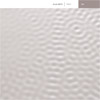
While it collects commissioned pieces from 2003 and 2006 through 2008 (hence the title), all of the various tracks here were created for other works and performances, but are still unified as being crafted by the hand of Carsen Nicolai. While there are a few different approaches used from track to track, never do they feel out of place along-side each other, and both the Alva Noto penchant for abstract composition and almost danceable rhythmic electronics appear here.
 
Opening track "Garment" and "T3 (for Dieter Rams)" both encapsulate the aesthetic of Nicolai’s home label Raster-Noton, beginning with seemingly random electronic fragments that are molded into a tight rhythm as the track plays on.Both feature disparate noise surges and deep, heavy bass pulses with the occasional glitchy click or resonating bell-tone.Both begin with more of a collage sense, the sounds having seemingly little to do with each other.However, the sounds pull together and lock into place, the result is a pseudo-techno work that just demonstrates Nicolai’s ability to clinically sequence the smallest sounds into memorable, almost catchy pieces.
In other pieces, the source isn’t so much a software patch as a piece of organic sound that forms the basis of the work.The two takes of "Argonaut (for Heiner Müller)" are constructed on samples of heavy, bassy strings.In its initial format, it is a slow, additive sequence that slowly brings in mournful digital melodies and soft, white puffs of noise and maintains a sad, bleak quality throughout.The closing "version" take on the piece works from the same recipe, but by including warmer bells and a more complex layering of sound, the piece has a more rejoiceful quality to it, celebrating rather than mourning."Early Winter (for Phill Niblock)" also starts from a sampled string basis (of a Niblock composition), but includes just enough digital elements to give an inhuman quality, and as it continues on it channels a bit of Vangelis’ Blade Runner soundtrack, but composed by the replicants themselves.
The other pieces more inhabit the world of abstract sound collage without a specific organic grounding or traditional rhythmic structure."Stalker (for Andrei Tarkovsky)" brings in the dark tension of the 1979 sci-fi film, meshing heavy bass tones and higher register pieces, all with minor chord stabs to give a bleak feel appropriate for the inspirational material.The short "ANS (for Evgeny Murzin)" is a brief, but live piece based upon the infamous Russian ANS synthesizer that juxtaposes rapidly fluctuating tones with longer, drawn out analog textures.
While the tracks in For 2 may be dedicated and inspired by artists in a variety of disciplines, Nicolai’s devotion to carefully structuring the smallest of sounds into rhythmic passages, as well as the lush exploration of digital and digitally treated sounds unites these pieces into a cohesive whole.Although they have a consistent, unifying feel to them, the tracks are all strong on their own merits, with no sense of filler or padding inserted.Alone or together, Carsten Nicolai’s compositions here shine as exemplary examples of contemporary electronic music.
samples:
 
Read More

